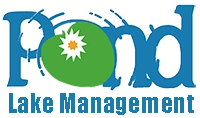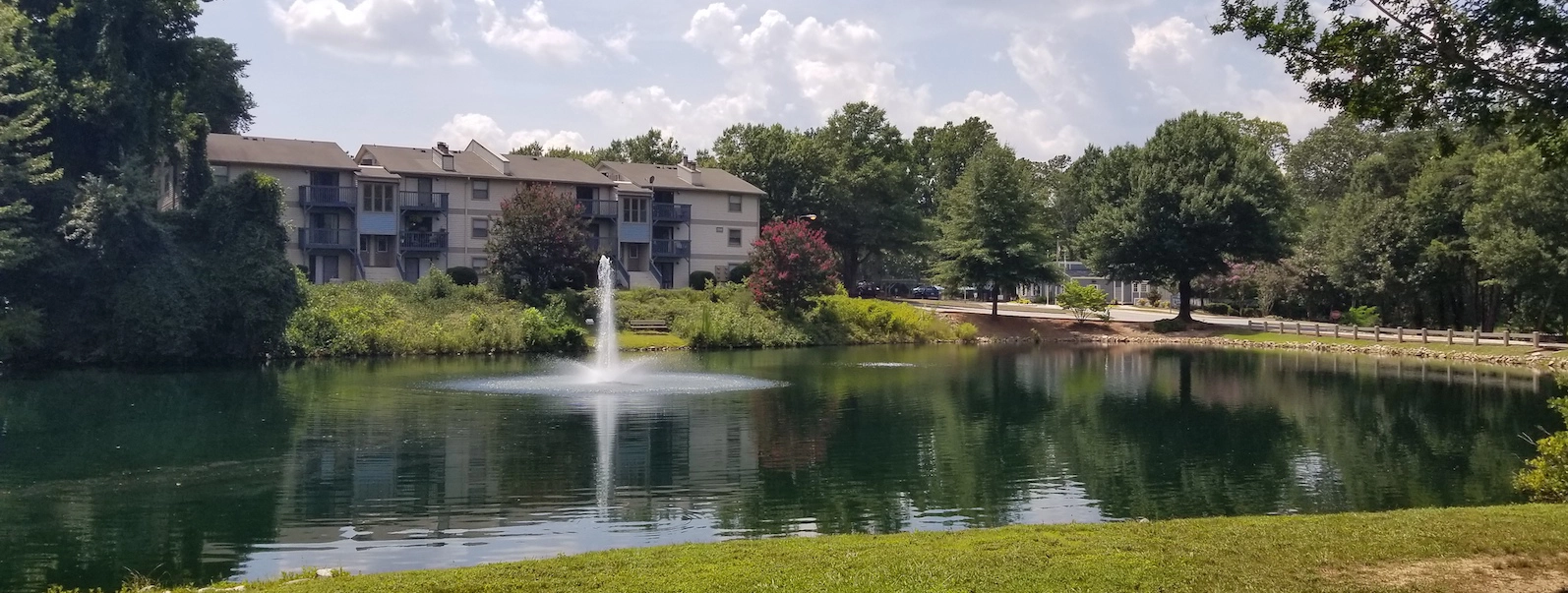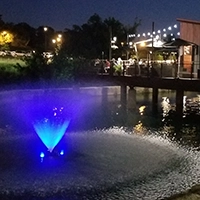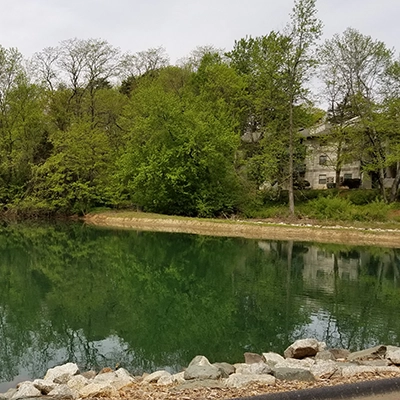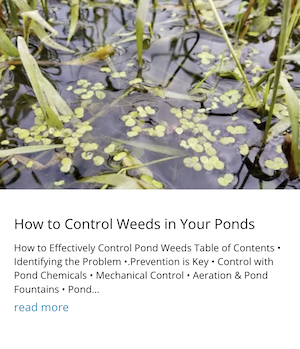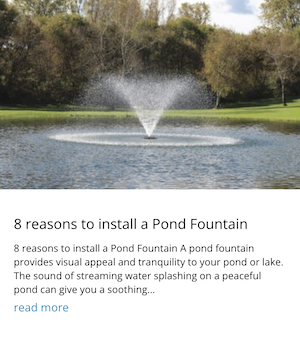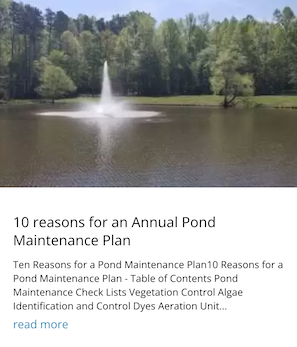Understanding Stormwater Retention Ponds and Their Maintenance
Table of Contents
Key Learnings
A Stormwater pond is a man-made pond
Poorly maintained ponds can lead to pollution issues, and invasive weed growth.
Stormwater ponds are a fixture of the community and can add healthy aquatic life as well as be visually pleasing.
A well-maintained, attractive stormwater pond can help with community property values.
How A Storm Water Pond Works!

Stormwater retention ponds are an important part of any property’s infrastructure. They are designed to collect stormwater runoff from buildings, parking lots, and streets and reduce the number of pollutants that enter local waterways. These ponds also help prevent flooding by storing water until it can slowly drain back into the local watershed. If you own or manage a property with a stormwater retention pond, you should be aware of how to maintain it properly
What is a Stormwater Retention Pond?
A stormwater retention pond is a man-made structure that collects excess rain and snowmelt runoff from nearby areas. It is usually constructed using large amounts of soil to create an embankment around the pond’s perimeter, allowing water to flow in and out while keeping sediment particles inside the area.
The size of the pond depends on the design requirements for your particular area and has to meet local regulations. In most cases, they are shallow basins made up of several layers including an inlet trench, filter fabric, gravel layer, impervious layer (e.g., clay), and outlet pipe connected to an underground drainage system.
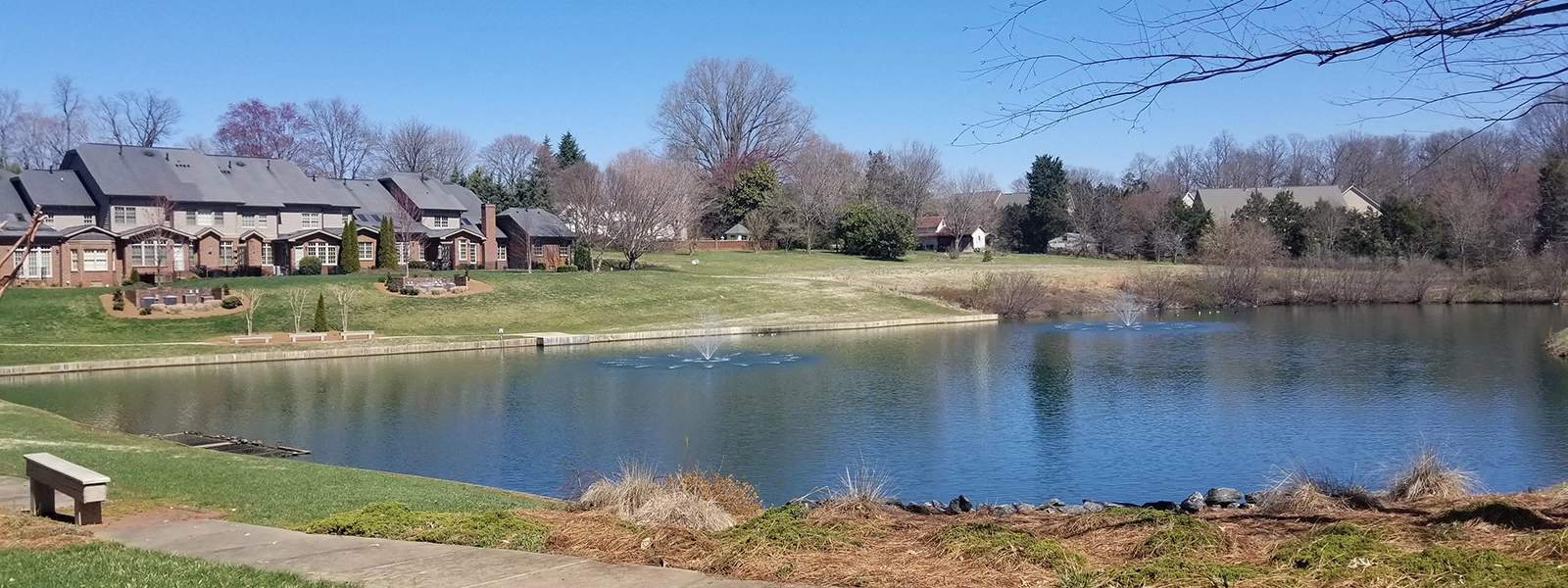
Why Should You Maintain Your Stormwater Retention Pond?
Stormwater retention ponds should be regularly inspected and maintained in order to ensure their proper functioning. Poorly maintained ponds can lead to pollution issues due to sediment buildup or invasive vegetation growth which can cause clogged pipes or blockages. Additionally, if not taken care of properly these structures may become breeding grounds for mosquitoes which can spread disease within the area or even cause flooding if overflow occurs due to blocked water outlets or heavy rains. Regular maintenance will help keep the pond clean and free of debris while also preventing erosion of its banks which could result in costly repairs down the line.
Call or complete a pond assessment form. Pond Lake Management can help assess, correct any issues and maintain your stormwater retention pond.
How do you maintain a stormwater pond?
In addition to having valuable sediment collection properties to capture unwanted runoff and residue from streets, parking lots, and other unpenetrable surfaces, a stormwater pond is part of the community landscape. Keeping a stormwater pond is important to keep it aesthetically pleasing, odor-free, and a healthy living environment for fish, birds, and other inhabitants.
Follow these guidelines to help keep your stormwater retention pond looking good and performing well.
Pro Tip
Protect a pond’s shoreline from erosion with rip-rap, gabions, or articulating blocks.*
- Keep the pond free from trash and all man-made waste
- Remove tree branches, limbs, and organic matter that will decay and add nutrients for
algae and other harmful weeds. - Maintain at least a 20-yard buffer zone from the pond shoreline that is fertilizer free.
- Keep the spillways in and out of the pond clear of debris to maintain a consistent
waterflow - Do not introduce new vegetation to the pond without consulting a professional who
can recommend appropriate solutions for your geographic area. - Consider adding aeration or fountains to your pond to assist with improving oxygen levels and water movement. Pond Lake Management installs and maintains fountains and aeration units from reputable manufacturers such as AirMax, and Kasco.
If you are already dealing with weed and algae issues in your stormwater pond you may need to consider a treatment plan using chemical weed control or alternative solutions. Excessive weed growth can choke the life out of a pond, making it difficult for fish and other inhabitants to survive and thrive.
Out-of-control weeds also increase the bottom sediment, cause odors and ruin the look of a pond. A pond overgrown with weeds can quickly take your pond from an aesthetic asset to a feature that negatively impacts the look and value of your property.
Protect your property value with a pond maintenance plan from Pond Lake Management
Over time your stormwater retention pond may start to have erosion issues. Consult with a pond maintenance professional about adding stone or other materials to limit erosion problems.

Conclusion:
Maintaining your stormwater retention pond is essential in order to keep your property running smoothly and safely for years to come. Regular cleaning and inspections will ensure that it remains functional while also helping reduce pollution levels within your local watersheds as well as potential health risks such as mosquito infestations from occurring due to standing water buildup over time.
Property owners and managers should take great care when it comes to maintaining their stormwater retention ponds in order to keep their properties safe from potential disasters in the future!
Other Resources:
Stormwater Wet Pond and Wetland Management Guidebook
EPA.gov
Stormwater Control Measures: Wet Detention Ponds
nashville.gov
Plant Selection for Infiltrating Wet Ponds in North Carolina
NC State Extension Retention Ponds Collect Storm Water and Remove Pollutants. UNC Environment, Ecology and Energy Program
Retention Ponds Collect Storm Water and Remove Pollutants
UNC Environment, Ecology and Energy Program
